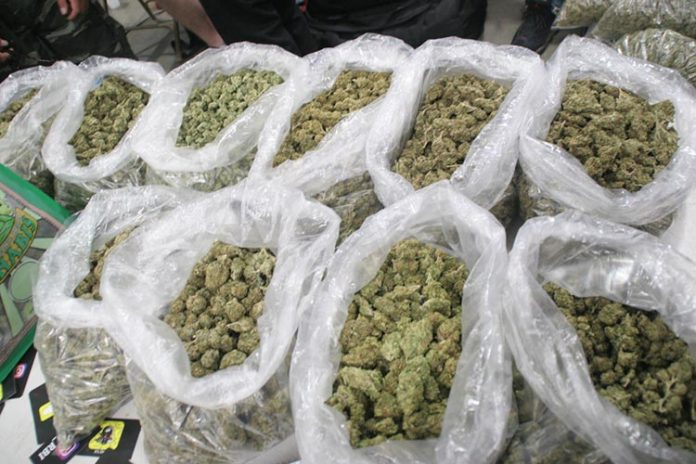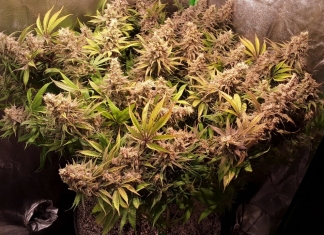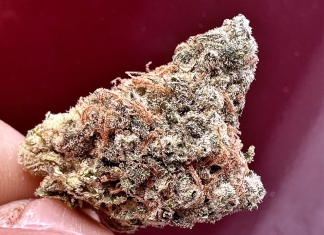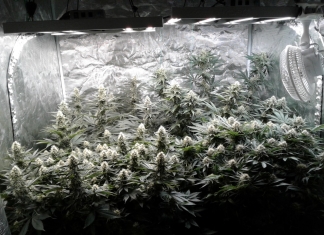Recreational cannabis has been legal in Oregon for only two years, but the state produced enough last year to supply every adult resident with more than 5 ounces of legal marijuana. There were more than 1 million pounds in the supply chain.
By comparison, California, which is in its first year of legalized recreational cannabis, produced 1.4 ounces of legal weed per adult, said Tom Adams, managing director at BDS Analytics Industry Intelligence Group, a national firm that studies the cannabis industry.
According to data provided by the Oregon Liquor Control Commission, only 108,330 pounds of usable recreational marijuana were sold in 2017 at the retail level, leaving 891,670 pounds in the pipeline to be stored for later sales or used in the manufacture of concentrates and edibles.
Although far more cannabis is being grown than consumed, the OLCC, which regulates the pot industry, doesn’t know for sure if this is causing a glut in the market or even affecting prices. The OLCC doesn’t know if that’s too much marijuana for Oregon consumers or just enough, said Mark Pettinger, OLCC spokesman.
“There’s a lot of unknowns about this,” Pettinger said. “We’ve not even processed two full years of legal recreational cannabis through the OLCC system. It’s been a challenge to forecast this market.”
But growers think there’s a glut, and the mismatch between production and consumption of recreational marijuana has led to dropping wholesale prices, with some growers scaling back production or getting out of the market.
Meanwhile, more producers are coming into the market, with nearly 900 marijuana license applications pending across Oregon, leading to concerns that some producers will be pushed out.
“Oregon is going through a survival of the fittest phase, and only the top producers will survive,” said Lizette Coppinger, founder of Bend-based recreational medical dispensary Cannabend.
More licensees, lower prices
The OLCC will be evaluating the supply and demand from July 2017 to June 2018 in a report for lawmakers.
“We just can’t draw a corollary between the amount on hand, the 1 million pounds, and sales,” Pettinger said. “We need to do a deeper dive into the data and look at the value-added products (concentrates, oils, edibles and tincture). We need that to answer the question of how much inventory of flower is enough for the regulated market.”
It’s these unknowns that made Joseph Stapleton decide to take a step back and seek only a retailer’s license from the OLCC rather than a retail license and a grower’s license. He can apply for the license after receiving land use approval in Deschutes County, for which he’s been waiting since August. If he gets approval, he can start construction on his Riverpine Road retail location in La Pine.
Over the past two years, 111 OLCC pot licenses have been canceled, but more than 1,800 licenses for analyzing, processing, growing, retailing, wholesaling and researching have been issued statewide, and about 1,300 are being processed, Pettinger said.
In the rural areas of Deschutes County, where county commissioners are thinking about changing the rules governing recreational cannabis, there are 46 recreational pot-related businesses — production facilities, processors, wholesalers and retailers — and 25 applications are pending, according to the county.
The OLCC says it can take a minimum of six months for an application to be processed. There are nearly 900 license applications pending across Oregon, said Pettinger. The OLCC began accepting applications for recreational cannabis in January of 2016 following a 2014 vote to legalize recreational use.
When the recreational cannabis laws went into effect, the OLCC anticipated it would receive about 800 to 1,200 applications and issue about 800, Pettinger said. Instead, as of Thursday, the agency had received more than 3,400 license applications. Over half are for producer licenses to grow marijuana and nearly a third are for retailer licenses to sell marijuana products. The number of approved applications is expected to reach approximately 2,000 by 2019, according to an OLCC report.
“People keep submitting their applications,” Pettinger said. “We don’t have a reasonable explanation for that. Our agency doesn’t have the authority to limit the number of licenses. It’s the responsibility or authority of the Legislature.”
The number of people seeking licenses could be contributing to the glut, Stapleton said. Another factor could be that more growers are also becoming producers and retailers, creating a vertically integrated system that helps control costs, said Lesley Jones, executive director of Tumalo Living Organic Farms, which is in the process of switching from a predominantly medical growing facility to a recreational facility.
“There are a lot of guys bailing this year,” Stapleton said. “They’re not getting their price, and there’s too much product around.”
Wholesale prices have been reported as low as $400 a pound to as high as $3,000 a pound, said Tyler Hauth, who farms at Smith Rock Cannabis Co. Outdoor-grown cannabis has dropped as much as 50 percent in price in this compressed market and indoor-grown by 25 percent to 30 percent, said Obie Stricker, CEO of Grown Rogue, a Medford-based cannabis farm and distribution operation.
“We forecasted this, but we didn’t predict how fast it occurred,” Stricker said. “What we have are market forces creating price compression.”
Given the competition and the unknowns in the marketplace, growers like Hauth have opted to grow and harvest less. He grows only what is presold.
At some dispensaries, however, prices have remained about the same despite some growers selling their product cheaper. At Cannabend, Coppinger said she relies upon the relationships she’s forged with growers to supply her with quality cannabis and she’s willing to pay for it.
“We have not cut prices because we still pay top dollar for the flower we buy,” Coppinger said. “It is the outdoor market that is suffering from the oversaturation of flower and competing against each other to survive. The producers we work with have not had to adjust their pricing as the quality of the product has only gotten better.”
Some in the industry are hoping that soon they’ll be able to sell cannabis grown in Oregon in other states where recreational cannabis is legal. Five states allow for legal retail sales — California, Colorado, Washington, Oregon and Nevada — and nine states have made recreational cannabis use legal. But because the federal government considers it a controlled substance and lists it as a Schedule 1 drug under the Controlled Substance Act, interstate sales are prohibited..
Supply and demand
When Hauth began his operations nine months ago, he planted his entire 5,000-square-foot indoor growing facility, figuring that he would need to reap as much as he could after waiting for his license. Today, however, he’s scaled back and harvests only what he can sell.
Hauth sees his future as more boutique-like, harvesting and growing smaller batches of cannabis. This will allow him to do the work himself rather than employing a crew, which would drive up costs, he said.
“Once I get the lab results, the product is ready to go to the retailers,” Hauth said. “It’s fresh and doesn’t lose its potency. I want to run this as a micro distillery. I’m learning what I need and don’t need, and I’m able to streamline things.”
And with his streamlined approach, he’s able to get prices that he is happy with, he said, because he’s not flooding the marketplace with cannabis.
“All these plants you see here are all presold,” Hauth said. “I won’t plant anything unless it has a home.”
Gary Bracelin, owner of Tokyo Starfish, which operates a grow facility and retail outlets, said the recreational cannabis industry is experiencing a market correction that any emerging industry would experience.
“People are going to jump in because it looks promising,” Bracelin said. “The free market takes over and normalizes the supply and demand of the emerging market. California will probably go through the same growing pains. It’s simple economics.”
Colorado went through the same market shakedown and oversupply, Jones said.. “No one knows what the demand is until there’s a tracking of it. It helps to have that information so you can plan. These are long-term ventures.”
Tumalo Living Organic Farms has seven outdoor greenhouses equipped with fans and air conditioning to regulate temperatures and carbon scrubbers to filter the air, all built in anticipation of approval by the state and county. It also has an indoor grow facility — an enclosed warehouse structure — with temperature, light and moisture control. The farm also has a processing and packaging center.
Producing marijuana from seed to store can take growers up to five months, and each step of the way there’s a tag on each plant that is tracked in Metrc, OLCC’s electronic tracking system.
There is no smell of cannabis at Tumalo Living, and the farm looks like any other farming operation. It employs 10 people full-time at this location, Jones said. The setup has cost the owners millions since its beginning in 2010 as a medical growing facility.
“There’s a huge misconception that people will be coming here and purchasing products,” Jones said. “We’re not just a bunch of college kids growing marijuana. It’s a mature business, a career field for people. We’re considered a boutique farm, kind of like a distillery. It’s all legal and safer, better quality and we’re eliminating the need for a black market.
“It’s essentially just farming, but we all have to be above board here.”














